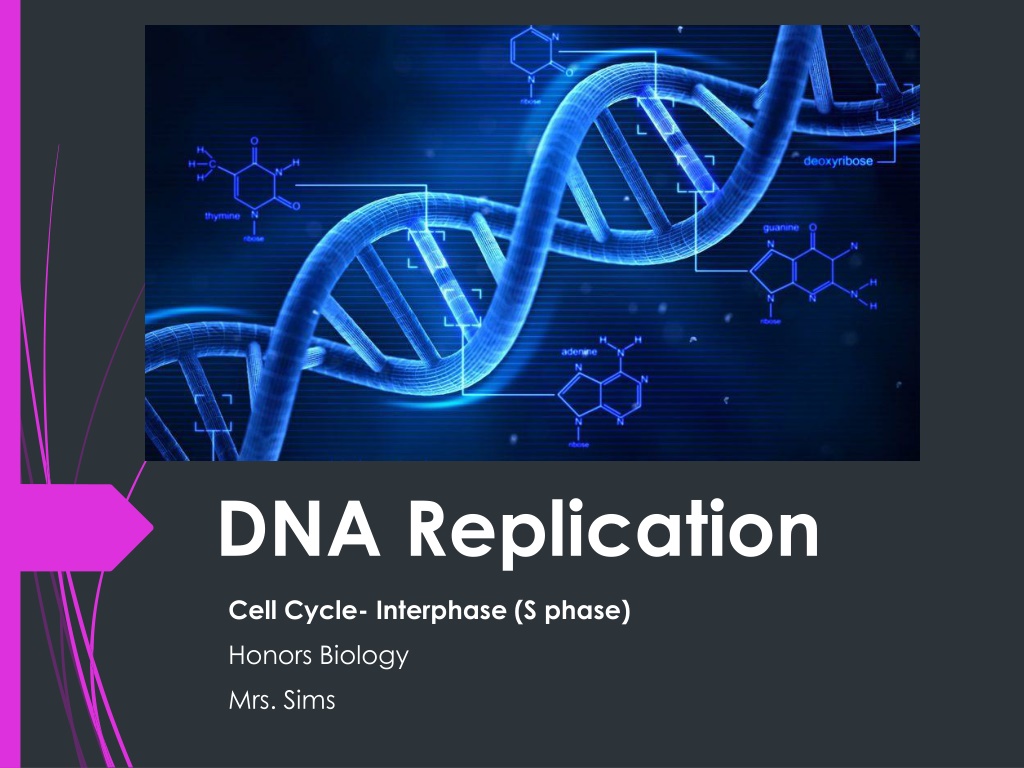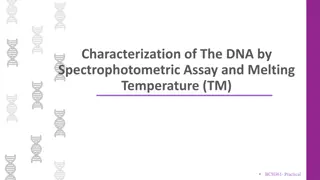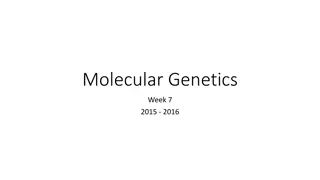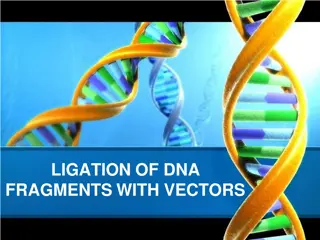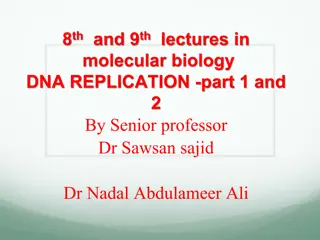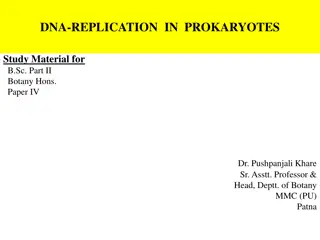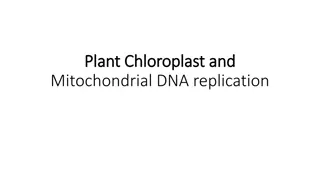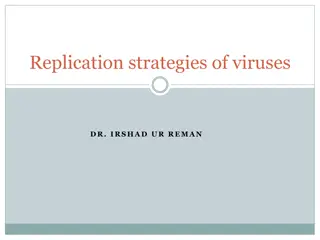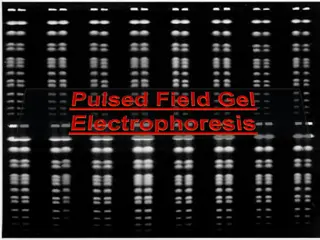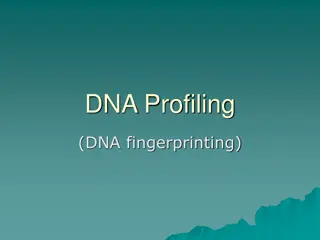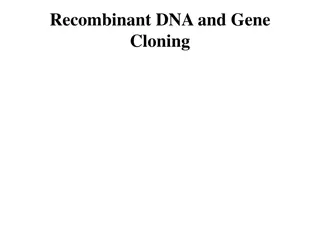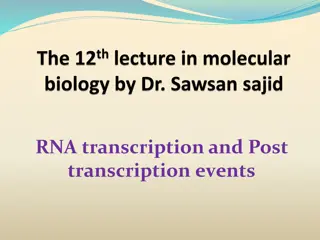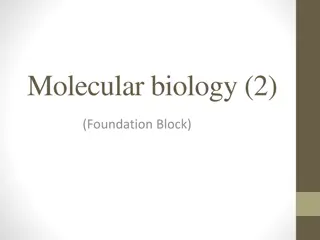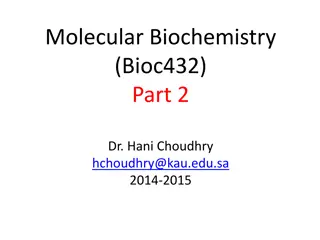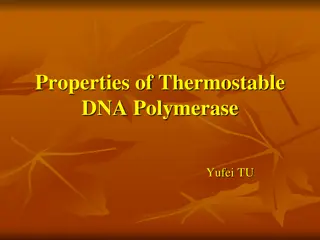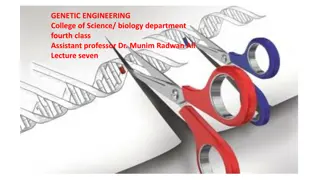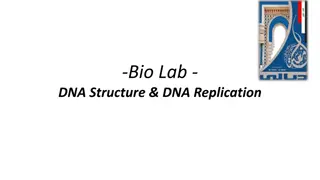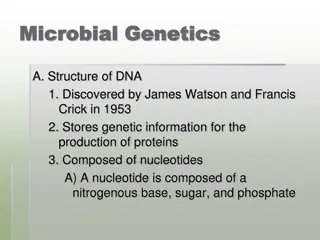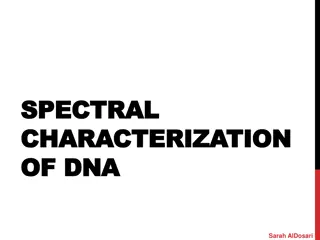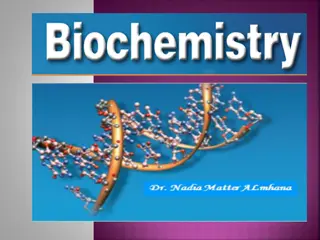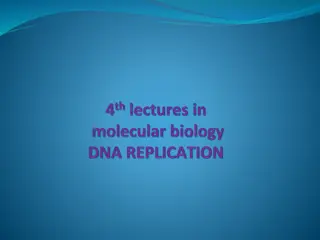DNA Replication
This content delves into the intricate process of DNA replication during the S phase of the cell cycle, exploring key concepts such as genetic information copying, base pairing rules, prokaryotic vs. eukaryotic replication differences, alternative models of replication, mutations, and the steps involved in DNA replication. It also provides focus questions and visuals to aid in understanding the fundamental aspects of DNA replication.
Download Presentation

Please find below an Image/Link to download the presentation.
The content on the website is provided AS IS for your information and personal use only. It may not be sold, licensed, or shared on other websites without obtaining consent from the author.If you encounter any issues during the download, it is possible that the publisher has removed the file from their server.
You are allowed to download the files provided on this website for personal or commercial use, subject to the condition that they are used lawfully. All files are the property of their respective owners.
The content on the website is provided AS IS for your information and personal use only. It may not be sold, licensed, or shared on other websites without obtaining consent from the author.
E N D
Presentation Transcript
DNA Replication Cell Cycle- Interphase (S phase) Honors Biology Mrs. Sims
Lets Start with a Video Please view the video before you start this presentation. DNA Replication Animation **This animation is created by McGraw Hill, the publisher of your textbook.
Focus Questions 18) What does the ending ase tell about a molecule? 19) In which direction does DNA replicate? 20) Why does one strand replicate faster and one slower?
Replication copies the genetic information. A single strand of DNA serves as a template for a new strand. The rules of base pairing direct replication. DNA is replicated during the S (synthesis) stage of the cell cycle. Each body cell gets a complete set of identical DNA.
Prokaryotes vs. Eukaryotes Prokaryotes: Prokaryotes have ONE point of Origin on their circular chromosome Eukaryotes have MANY on their linear chromosomes! Eukaryotes:
Semiconservative replication Parental DNA First generation Second generation
Mutations DNA Polymerase has an error rate of only 1 wrong nucleotide per 100,000! Mutations are any change in DNA sequence and can be caused by mutagen A mutagen is any chemical or environmental condition that causes a mutation Point Mutations mutations in a single nucleotide base Substitution one nucleotide substituted for another Insertion one nucleotide is inserted into the sequence Deletion one nucleotide is deleted from the sequence
DNA Replication 1) DNA Helicase attaches to DNA and breaks the hydrogen bonds between bases to unwind it. 2) Primase puts down an RNA primer for DNA Polymerase to attach nucleotides to. 3) DNA Polymerase III adds nucleotides moving towards the 5 end of the template strand building the new strand from the 5 to 3 direction. Leading strand is continuous Lagging Strand is slower, discontinuous and creates Okazaki Fragments 4) DNA Polymerase I removes the RNA primers and replaces them with DNA nucleotides. 5) Ligase covalently bonds the replaced DNA nucleotides together.
1) DNA Helicase attaches to DNA and breaks the hydrogen bonds between bases to unwind it, creating a Replication Fork. Primase puts down an RNA primer for DNA Polymerase III to attach nucleotides to. DNA Polymerase III adds nucleotides moving towards the 5 end of the strand it is on, so it builds the new strand from the 5 to 3 direction. 2) 3) Leading strand 1 DNA helix RNA primer DNA polymerase Replication fork (Helicase unwinding) Lagging strand (first Okazaki fragment) Direction of replication
DNA Polymerase III adds nucleotides to the Leading and Lagging strands as it moves towards the 5 end of each strand it is using as a template. This creates Okazaki Fragments on the Lagging strand. Leading strand Primase: makes RNA primers 2 Two Okazaki fragments
4) DNA Polymerase I removes the RNA primers and replaces them with DNA nucleotides. 5) DNA Ligase covalently bonds the replaced DNA nucleotides together. Leading strand DNA Polymerase III 3 Helicase DNA Polymerase I Third Okazaki fragment DNA ligase RNA primer (Primase) Lagging strand
Focus Questions 21) What are the three ways in which DNA was hypothesized to replicate? Which is the actual method? 22) What scientists performed an experiment to determine the way in which DNA replicates? 23) What are the two different strands involved in DNA replication and which strand is replicated faster? 24) Why is there a difference between the replication rate of each strand? (Describe in terms of replication direction and continuity.)
DNA Replication in Real Time https://www.youtube.com/watch?v=yqESR7E4b_8
